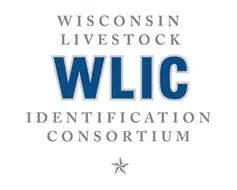
Madison, Wis. (April 4, 2025) – The Wisconsin Livestock Identification Consortium (WLIC) held its annual meeting on Thursday, April 4 at the Department of Agriculture, Trade and Consumer Protection (DATCP). The event brought together animal health experts, producers and industry leaders to focus on Wisconsin’s established animal disease traceability system, in which WLIC serves as an integral part of, and how the National Milk Testing Strategy (NMTS) will soon be implemented to better understand where the Highly Pathogenic Avian Influenza (HPAI) virus is present in U.S. dairy herds.
The annual meeting kicked off with an animal health update from the DATCP veterinary program manager team, highlighting what animal diseases are being closely monitored around the globe, including African Swine Fever, New World Screwworm, Bluetongue, Foot-and-Mouth Disease, and one that is particularly rampant in the U.S., HPAI. The DATCP team highlighted the significance of this animal disease spread, recognizing that the initial virus spillover event was due to wild birds infecting a dairy cow in March 2024 in Texas.
So far in 2025, Wisconsin has had zero cases of HPAI in both poultry and dairy cattle, though there were four cases of HPAI in poultry flocks in Wisconsin in 2024. Wisconsin is currently at a status “provisionally unaffected” regarding HPAI in dairy cattle and will be working towards a status of “unaffected” via testing completed in conjunction with NMTS.
Serving as the guest speaker for WLIC’s annual meeting, the Wisconsin Veterinary Diagnostic Laboratory (WVDL), which is based on UW-Madison’s campus, shared their experience in learning about HPAI testing in milk, the various ways of transmission of the HPAI virus in species including humans, and the lab’s preparations for the NMTS to get underway here in Wisconsin.
WVDL has been testing for HPAI since its inception into the NAHLN program in 2002, but the current HPAI outbreak began in poultry in March of 2022. Since 2022, WVDL has tested more than 5,000 matrix PCR tests. Their testing has spanned both commercial and non-commercial flocks, wild birds and mammals. HPAI bovine testing begin in March of 2024, and has tested more than 6,000 samples from Wisconsin, California, Utah, Illinois, Pennsylvania, Montana, Minnesota, Kansas, Iowa and the Canadian province, Quebec. Over the last 12 months, staff members from WVDL have also helped other NAHLN labs that were being overwhelmed with tests. This experience helped WVDL staff better understand what challenges exist when suddenly hundreds of tests need to be conducted in a short time frame and how imperative it is to maintain an aseptic laboratory environment to ensure quality test results.
Another vital component to quickly running tests is using a barcode system to automate data entry for premises ID, which ensures this data is accurate and consistent throughout the process.
“Wisconsin has a great program for premises identification,” said Dan Christensen, General Laboratory Manager at WVDL. “When it comes to efficiency, reporting and messaging, having this premises ID accurately included with each sample is absolutely critical.”
Since WVDL runs a PCR test for these milk samples, the lab cannot confidently test a milk bulk silo tank to find potential positives. The test is simply not sensitive enough to ensure accuracy. Instead, Wisconsin’s approach will be to test at the dairy-level rather than a silo.
The NMTS has only been implemented for a few months but has already proven its success. In January of 2025, a novel species cross-over event was detected in a Nevada dairy herd. As well, in February of 2025, another novel species cross-over event occurred in an Arizona dairy herd.
While Wisconsin prepares to initiate its NMTS, 2025 also happens to be a livestock premises renewal year, which takes place every three years. Durning the business session, Executive Director Julie Sweney shared updates on the progress of renewing all the livestock premises across the state.
“We recognize more than 65,000 livestock premises are active in our database, and we are currently working on contacting all these livestock owners to review their existing information and renew their premises,” said Sweney. “In light of HPAI impacting several species, it is very important for livestock owners to renew their premises and ensure their information is up-to-date.”
Livestock owners should have received an email requesting they renew their premises. Anyone who has not renewed yet is encouraged to call WLIC at 888-808-1910 to renew today. Registrant information is kept confidential by law and is never sold for commercial use.
Following the member meeting, Scott Schneider of Nature Link Farms was re-elected chair of the board, with John Haag of Haag Dairy representing the Professional Dairy Producers (PDPW) re-elected as vice-chair. Re-elected to serve as secretary was Rob Meier representing Equity Cooperative and Matt Crimmins representing Johnsonville Sausage was re-elected treasurer.
The remaining seats of the 12-member board include Kim Bremmer of the Wisconsin Farm Bureau Federation, Lexi Miller of World Dairy Expo, Nic Rue of Compeer Financial, Steve Spring of the Wisconsin Cattlemen’s Association, Hannah Statz of the Wisconsin Beef Council, Tina Peterson of Dairy Farmers of Wisconsin, Betty Lund of Dairy State Cheese, and AV Roth of Roth Feeder Pigs representing Wisconsin Pork Association.
“Renewing your livestock premises is a very simple, easy thing for livestock owners to do to help ensure that this industry we all know and love can continue with minimal interruption when faced with an animal disease outbreak,” said Sweney.
Wisconsin Livestock Identification Consortium (WLIC) is a private, non-profit (501c3) organization working to protect animal health through traceability by premises identification used to prevent the spread of livestock disease. For more information or to become a member or sponsor, visit www.wiid.org or call 888-808-1910.



Comments